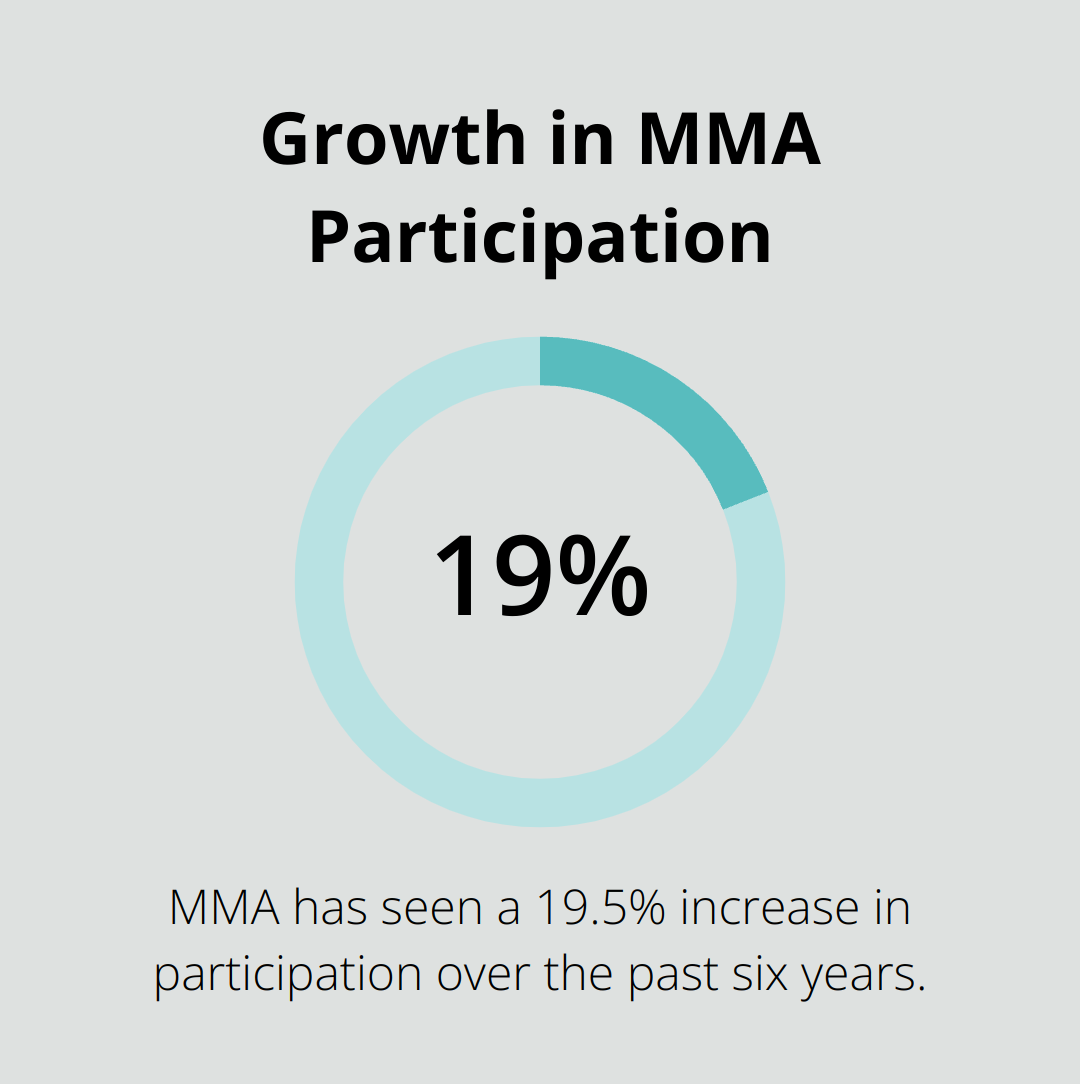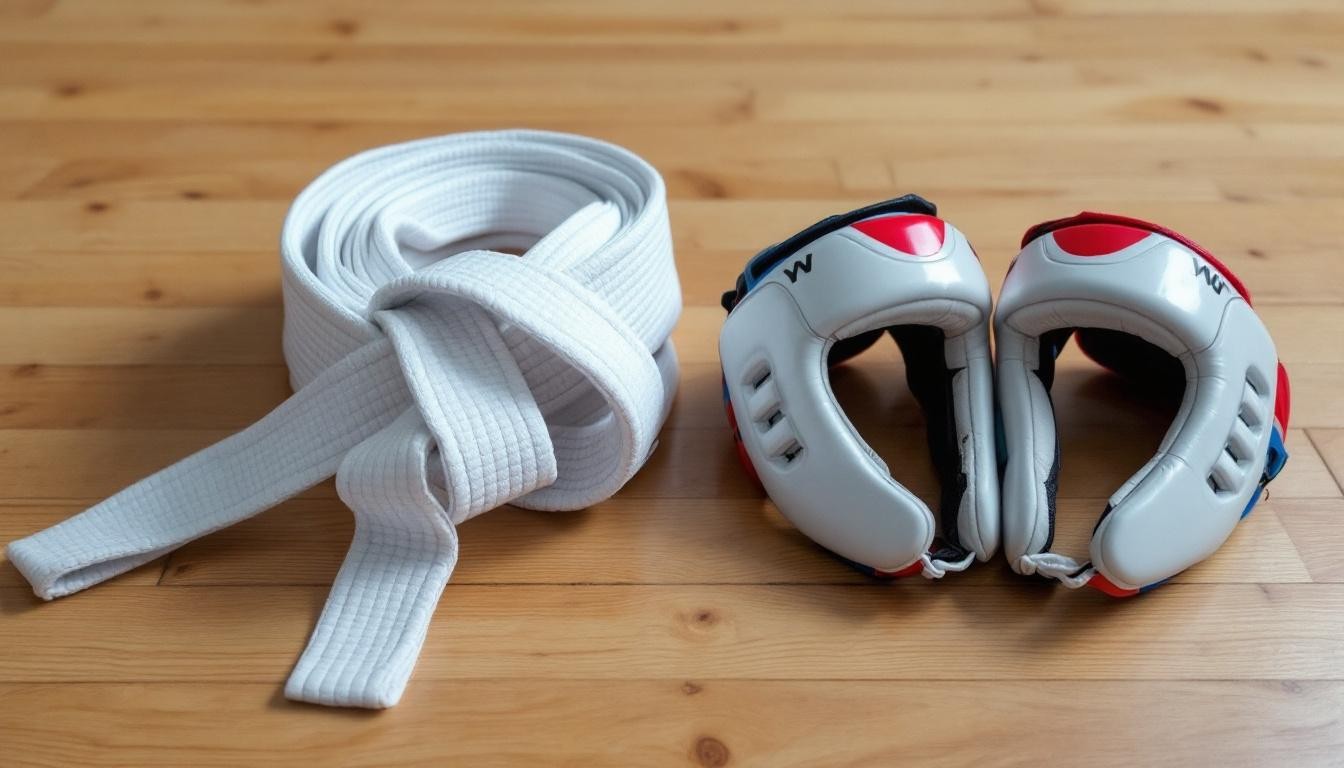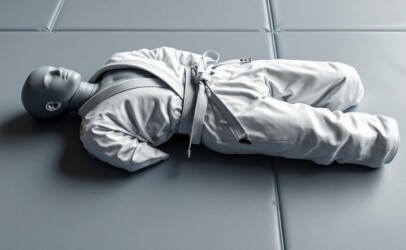At Jiu Jitsu, we often get asked about the best martial art for self-defense. This question sparks debates among practitioners, especially when comparing styles like Jiu Jitsu vs Taekwondo.
While each martial art has its strengths, the effectiveness of any self-defense system depends on various factors. In this post, we’ll explore popular martial arts and key elements that contribute to practical self-defense skills.
Which Martial Art Excels in Self-Defense?
Brazilian Jiu-Jitsu (BJJ)
Brazilian Jiu-Jitsu (BJJ) excels in ground fighting and close-quarters combat. It emphasizes using leverage and technique to dominate opponents instead of sheer physical strength. This makes it an effective martial art for self-defense, particularly against larger opponents. BJJ’s focus on technique over brute force makes it accessible and practical for practitioners of various physical abilities.
Muay Thai
Known as the “Art of Eight Limbs,” Muay Thai utilizes punches, kicks, elbows, and knee strikes. This versatility makes it highly effective in stand-up confrontations. Muay Thai training also develops exceptional cardiovascular fitness and striking power. A 2020 study published in the Journal of Strength and Conditioning Research reported that Muay Thai practitioners had significantly higher punch force compared to untrained individuals.
Krav Maga
Developed for the Israeli military, Krav Maga focuses on real-world scenarios and quick neutralization of threats. It incorporates elements from various martial arts and emphasizes instinctive movements. The National Institute of Justice reports that Krav Maga training can significantly reduce the fear of violence among practitioners, boosting confidence in self-defense situations.
Mixed Martial Arts (MMA)
MMA combines techniques from multiple disciplines, offering a well-rounded approach to self-defense. It covers both striking and grappling, preparing practitioners for various scenarios. According to the Sports & Fitness Industry Association, MMA has seen a 19.5% increase in participation over the past six years, indicating its growing popularity and perceived effectiveness.

Choosing the Right Martial Art
The best martial art for self-defense depends on various factors, including your physical attributes, personal goals, and the situations you’re likely to encounter. At Souza Grappling Co., we offer classes in Brazilian Jiu-Jitsu and Muay Thai, providing our members with a comprehensive self-defense skill set. Our expert trainers focus on practical applications, ensuring that you’re prepared for real-world situations.
The effectiveness of any martial art ultimately comes down to consistent practice and the ability to apply techniques under pressure. In the next section, we’ll explore the key factors that contribute to effective self-defense, regardless of the specific martial art you choose to pursue.
Key Factors in Effective Self-Defense
Self-defense requires more than just knowing a few moves. It demands a comprehensive approach that combines physical skills, mental readiness, and practical application. Let’s explore the key elements that contribute to effective self-defense.
Real-World Practicality
Effective self-defense techniques must work in unpredictable, high-stress situations. A study published in the Journal of Strength and Conditioning Research found that techniques relying on fine motor skills often fail under extreme stress. This is why gross motor movements and instinctive reactions should take priority in training.
For example, simple, powerful strikes (like those taught in Muay Thai) can be executed even when adrenaline surges through the body. Scenario-based training, which simulates common attack situations, helps students apply their skills in realistic contexts. Martial arts offer a practical and effective means of protecting oneself, providing both physical and mental benefits that extend beyond mere defense.
Physical Conditioning
Physical fitness plays a vital role in self-defense. A 2022 survey by the National Self-Defense Institute revealed that individuals with higher levels of cardiovascular fitness and strength were 40% more likely to defend themselves successfully in physical confrontations.
Regular training can lead to significant improvements in physical capabilities, making it easier to execute techniques effectively when needed. Brazilian Jiu-Jitsu, for instance, provides an excellent full-body workout that enhances strength, flexibility, and endurance.
Mental Preparedness
The psychological aspect of self-defense often gets overlooked but remains equally important. A study in the Journal of Interpersonal Violence showed that individuals who received mental preparedness training alongside physical self-defense instruction were 60% more likely to use their skills effectively in real situations.

Situational awareness exercises and stress inoculation training help students remain calm under pressure and make quick, informed decisions. De-escalation techniques (an essential part of many self-defense systems) emphasize that the best self-defense often involves avoiding physical confrontation altogether.
Adaptability and Versatility
No two self-defense situations are identical. The ability to adapt techniques to different scenarios is crucial. This adaptability comes from understanding the principles behind the techniques, rather than just memorizing specific moves.
Mixed Martial Arts (MMA) exemplifies this adaptability, combining techniques from multiple disciplines to prepare practitioners for various scenarios. This versatility allows individuals to respond effectively to different types of threats.
Consistent Practice
The effectiveness of any self-defense system ultimately depends on consistent practice. Regular training helps ingrain techniques into muscle memory, allowing for quicker reactions in high-stress situations.
Sparring and pressure testing play vital roles in this process. They provide opportunities to apply techniques against resisting opponents, simulating the unpredictability of real-world confrontations.
The journey to effective self-defense doesn’t end with mastering these key factors. The next section will explore how proper training and practice methods can further enhance your self-defense capabilities.
How to Maximize Your Self-Defense Training
Regular training forms the foundation of effective self-defense skills. A study assessed whether an extended program of martial arts training was a viable intervention for at-risk youths in improving cognitive and behavioral outcomes.

The Power of Consistent Practice
To optimize your progress, try to schedule 2-3 training sessions per week. This frequency allows for skill retention and steady improvement without risking burnout. Many students find that alternating between different martial arts classes (such as Brazilian Jiu-Jitsu and Muay Thai) provides a well-rounded skill set and maintains engagement in their training.
Pressure Testing Your Skills
Sparring and pressure testing play essential roles in effective self-defense training. These practices allow you to apply techniques against a resisting opponent, simulating the unpredictability of real-world confrontations.
Controlled sparring sessions (carefully monitored by experienced instructors) ensure that students can test their skills in a safe environment while gaining valuable learning experiences.
Adapting to Different Scenarios
Real-world self-defense situations rarely follow a predictable pattern. Therefore, training for various scenarios and learning to adapt techniques accordingly becomes imperative.
Scenario-based training exercises that simulate common attack situations help students develop quick decision-making skills and learn to apply their techniques in different contexts.
Examples of such exercises include:
- Defending against multiple attackers
- Responding to surprise attacks from different angles
- Practicing techniques in confined spaces
This type of training enhances your ability to think on your feet and apply your skills effectively in diverse situations.
Incorporating Mental Preparation
Physical skills alone do not guarantee success in self-defense situations. Mental preparation plays an equally important role. Techniques such as visualization, stress inoculation training, and situational awareness exercises can significantly improve your readiness for real-world encounters.
Continuous Learning and Improvement
Self-defense training is an ongoing process. As you progress, you’ll discover new techniques, refine existing skills, and gain deeper insights into the principles of effective self-defense.
Stay open to learning from various sources (instructors, training partners, seminars, and even real-life experiences). This continuous learning approach will help you adapt your self-defense strategies to your changing needs and circumstances over time.
Final Thoughts
Self-defense requires a combination of physical skills, mental preparedness, and practical application. The debate of Jiu-Jitsu vs Taekwondo illustrates how different martial arts excel in various aspects of self-defense. Cross-training in multiple disciplines often proves beneficial, allowing practitioners to develop a well-rounded skill set.
Self-defense extends beyond physical techniques to include mental preparedness, situational awareness, and de-escalation skills. The most effective self-defense strategy is one that you can execute confidently under pressure. Regular practice and commitment to your chosen martial art will equip you to handle potential threats.
We at Souza Grappling Co. offer a comprehensive approach to self-defense and fitness. Our facility provides classes in Brazilian Jiu-Jitsu, Muay Thai, and self-defense for all skill levels. Our expert trainers ensure a safe, supportive environment where you can build confidence, improve fitness, and master practical self-defense skills (while enjoying the numerous benefits of martial arts training).




